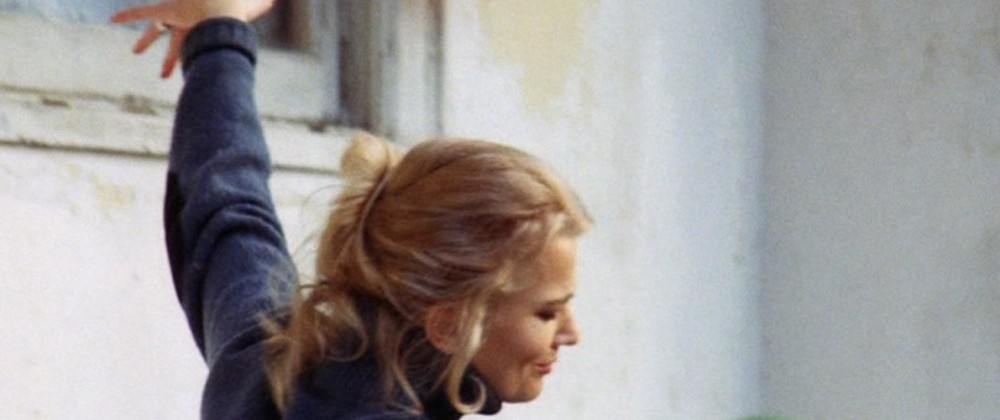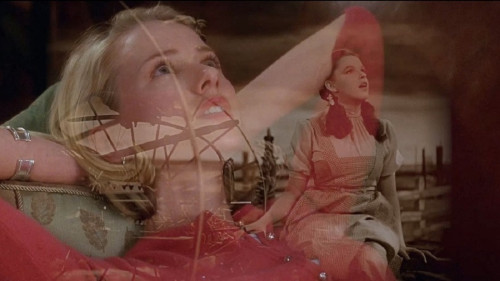Volume 17, Issue 2 / February 2013
Oddball Auteurs
In this issue
-
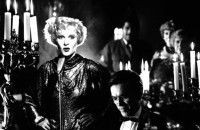
Mirroring History: Fassbinder’s The BRD Trilogy
-
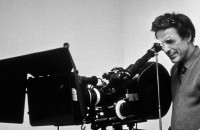
Gena Rowlands and John Cassavetes: Equal Stars of A Woman Under the Influence
-

Running the Lunatic Asylum: Tracing the Grotesque Body in Jan Svankmajer’s Lunacy (2005)
-
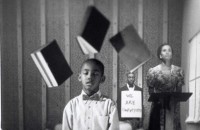
The Journey Itself is Home: John Akomfrah’s film meditation on immigration in Britain, The Nine Muses
“You get settled, and then you too become part of the strangeness”
-
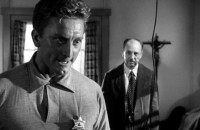
Evil Under the Sun: Ace in the Hole
In this issue we spotlight directors with a firm hold on their identity but who have either not received their due critical coverage (Jan Svankmajer, John Akomfrah) or were known for their ‘prickly’ personalities which made them ‘outsiders’ in their field (Rainer Werner Fassbinder, John Cassavetes, and, to a lesser extent, Billy Wilder). Oddballs in the sense of filmmakers who strove to make themselves heard, regardless of how loud or silent their cry. Najmeh Mahani studies the introspective ‘BRD’ trilogy from Germany’s New German Cinema ‘enfant terrible’ Fassbinder, a director whose light shone brightly but was tragically cut short by a drug overdose just a few weeks shy of his 37th birthday. His career was emblematic of the self-destructive artist whose prodigious talent was matched by a less than healthy lifestyle. Similarly was John Cassavetes’ brilliant career as an actor and actor-driven director, who lived hard and fast until his body gave way at age 59. First time writer Jennifer Sin looks at a defining work from one of American cinema’s greatest iconoclasts and perhaps the greatest embodiment of the independent spirit in cinema, John Cassavetes. Cassavetes is surely an ‘oddball’ in his manner of producing films (largely separate from the Hollywood system, or problematically within, the case with the film in question here) and directing (eschewing stylistic bravura for raw emotional acting). Sin takes her thesis cue from the work of Ray Carney, who was greatly influenced in his work on Cassavetes by the American Pragmatism of philosopher/psychologist William James: “…if one thing most distinguishes Cassavetes’ work from other American film, it is that expression is embodied. Meaning is generated by and anchored in the actors’ bodies their physical movements, tones of voices, facial expression, and gestures” (Ray Carney, The Films of John Cassavetes, p. 165). Rachel Jenakowski analyzes the work of Czech stop motion animator, surrealist par excellence, Jan Svankmajer, singling out his 2005 feature film Lunacy. It is Svankmajer’s chosen medium of the (mainly) short film, coupled with his surrealist sensibility and style of stop-motion, pixilation of three dimensional objects which casts him as an oddball auteur. Throw in a frequent East European political-satirical subtext and you have a body of work that is never easy to classify. Daniel Garrett gives a nuanced analysis of the recently released (by Icarus Films) films of Black British filmmaker John Akomfrah, whose important works have not received substantial critical attention nor audience exposure outside the UK, where, according to the Icarus website, Ghanian born Akomfrah is “widely recognized as one of the most influential figures of black British culture in the 1980s.” The distribution label Icarus Films is carving itself a nice niche of the educational market with interesting documentaries, social studies, and experimental works, including the recent releases of three Akomfrah films, Seven Songs for Malcolm X (1993), The Last Angel of History (1997), and Nine Muses (2010). Concluding the issue is an in-depth analysis of Billy Wilder’s troubled (if ultimately successful) fit into the Hollywood system, perhaps a perfect example of the cliché ‘square peg in a round hole’. Wilder brought his dark Jewish-Germanic sensibility to bear on some of Hollywood’s most cynical and corrosive films, both as a screenwriter and director. Writer Graham Daseler settles on one of his lesser known titles, but one that Daseler argues is exemplary in its outright cynicism, Ace in the Hole. (Donato Totaro, ed.)

